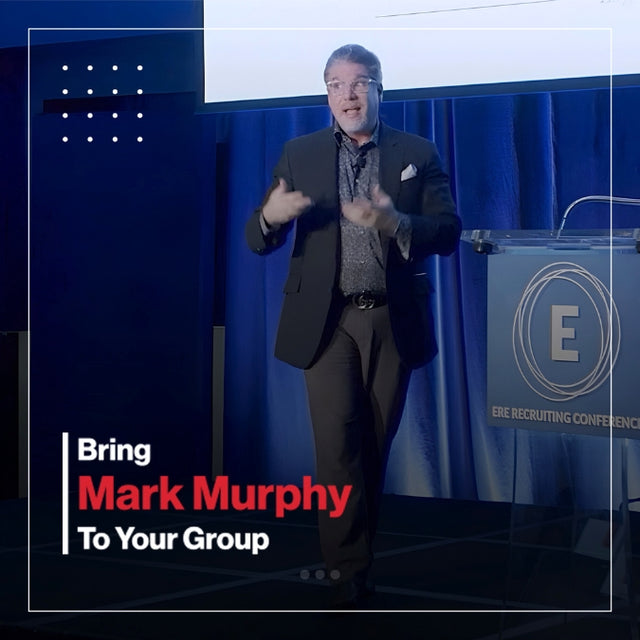The Herding Effect: How Group Behavior Shapes Decision Making
Humans often pride themselves on independent thinking, yet time and again we observe people "following the herd" -- aligning their decisions with the majority or a few influential peers. This phenomenon, commonly called the herding effect (or herd behavior/mentality), occurs when individuals mimic the actions of a larger group instead of relying on their own judgment. As economist Abhijit V. Banerjee famously defined it: "Everyone does what everyone else is doing, even when their private information suggests doing something quite different."[1] In essence, people take cues from others' choices and behaviors, often without independent analysis[2], assuming that the collective decision must be correct or safer. From stock market manias to viral consumer trends, from technology adoption fads to decision-making in corporate teams, the herding effect is a powerful force that can heavily influence outcomes. This report delves into the herding effect's theoretical underpinnings and empirical evidence across multiple domains -- finance, consumer behavior, social psychology, technology adoption, and team decision-making -- with an emphasis on modern research (primarily U.S.-focused) and real-world examples. We'll explore why people herd, how herding manifests in different contexts, and what implications it carries for business professionals seeking to harness or mitigate its impact.
Why People Follow the Crowd: Causes and Psychology of Herding
Herding behavior is deeply rooted in human psychology and social dynamics. At its core, humans are social creatures, driven by a desire for acceptance and a belief in the wisdom of groups[3]. Several key factors explain why individuals so often fall prey to the herding instinct:
- Social Acceptance and Norms: People have an inherent need to belong and to be accepted by others. Following the crowd can signal alignment with social norms and avoid the risk of standing out or being wrong alone[3]. Psychologists note that individuals often "seek acceptance and inclusion from others who hold the same views", allowing those shared beliefs to shape their own decisions[3]. In a classic demonstration, Solomon Asch's 1950s experiments showed that individuals would conform to a group's obviously incorrect judgment (e.g. about the length of a line) rather than contradict the majority, purely due to social pressure[4]. This normative influence -- the pressure to conform in order to fit in -- is a fundamental driver of herd behavior.
- Informational Influence: In many cases, people follow others because they believe others possess better information. Especially under uncertainty, seeing many others choosing X is taken as evidence that X might be a good choice. Psychologist Robert Cialdini dubbed this principle "social proof", where we assume that if many people are doing something, it must be correct or worthwhile[4]. For example, if you walk by two restaurants and one is bustling with a waiting line while the other is empty, you're naturally inclined to favor the crowded one -- the group's presence is a signal of quality. Indeed, choosing a busy restaurant in an unfamiliar city illustrates rational herding: an individual assumes the crowd's collective knowledge exceeds their own, so the popular choice is likely the better one[5]. Following the crowd here can be a reasonable heuristic to cope with limited personal information.
- Cognitive Ease ("Information Shortcut"): Copying others can simply be easier than independently researching and deliberating. It is "far simpler to follow others' decisions" than to gather and analyze all pertinent information ourselves[6]. In our daily lives inundated with choices (products to buy, investments to make, strategies to pursue), defaulting to what others are doing is a convenient shortcut. We often assume others have done their homework, so mimicking their choice saves effort[6]. This mental shortcut is part of why herding is common in consumer decisions -- it's a way to simplify complex choices by using the crowd as a guide.
- Fear of Missing Out (FOMO) and Emotion: Emotion plays a significant role. The fear of missing out on a rewarding experience or gain if "everyone else is doing it" can propel herd behavior[7]. If others seem to be benefiting from a decision, people feel pressure not to be left behind. Likewise, collective emotions can spread contagiously: excitement can snowball when a trend gains momentum, just as panic can spread rapidly in a crowd. Behavioral economists note that "waves of optimism and pessimism" sweep through groups during booms and busts, as people infect each other with euphoria or fear[8]. This emotional contagion often underlies herd-driven market bubbles and crashes (more on that in the finance section).
- Trust in Leaders or Experts: Sometimes herding occurs by following a perceived authority or simply the first mover. A dominant personality in a group can set a direction that others then uncritically follow -- a dynamic dubbed "despotism" in group decision research[9]. The assumption is that the leader knows best, or at least that aligning with them is safer than opposing. This can be rational (if the leader is expert) or irrational (if the leader is actually incompetent, the group may head off a cliff)[9]. In many organizations, junior employees may echo the opinion of a senior leader rather than voice their own, exhibiting herd behavior out of deference or career concerns.
As the above points show, following others can be a sensible strategy in certain situations. If others genuinely have better information, or if coordination yields benefits (e.g. everyone adopting the same technology so it becomes standard), herding can lead to good outcomes. Researchers distinguish rational herding -- when individuals imitate because it truly maximizes their expected utility given available information -- from irrational herding driven by cognitive biases or undue social pressure[10]. In practice, these motivations blend together. The next sections explore how these dynamics play out in various domains.
Herding in Financial Markets: Bubbles, Crashes, and Investor Behavior
One of the most consequential arenas for herd behavior is finance. Financial markets, from stocks to real estate to cryptocurrencies, are repeatedly buffeted by herd-driven booms and busts. Understanding herding in this context is critical because it can amplify volatility and lead to dramatic mispricing of assets.
Speculative Bubbles and "Crowd" Manias
Historical Examples of Financial Herding
Economists have long observed that herding is a key factor in speculative bubbles. In a bubble, investors pile into assets simply because others are doing so, driving prices to unsustainable heights. John Maynard Keynes noted this phenomenon as early as the 1930s -- in uncertain times, investors "believe what others believe and do what others do," creating self-reinforcing price trends[8]. This behavior is often fueled by optimism that feeds on itself (everyone buys because they see everyone else buying). A modern description is that investors are driven more by "fear of missing out" and popular sentiment than by objective analysis of fundamentals[11].
As a 2025 study explains, during bubbles people invest in "popular stocks" due to the "perceived wisdom of the majority," which in turn inflates prices -- but when reality catches up, the bubble inevitably bursts, causing devastating downturns[11].
History provides many vivid examples. The late-1990s dot-com stock frenzy saw investors chasing internet companies' shares simply because "everyone" was buying tech -- despite many firms having no profits. The herd mentality drove the NASDAQ index up exponentially, only for it to crash spectacularly in 2000 when the hype collapsed. A similar pattern unfolded in the mid-2000s housing market bubble: widespread belief that housing prices would only go up led millions to buy homes or mortgage-backed securities because others were doing so, contributing to the 2008 financial crisis when reality intervened.
Why Investors Herd -- Rational and Irrational Forces
Not all financial herding is purely mindless. Some of it stems from rational decision rules in an information-sparse environment. Financial economists have modeled information cascades where, for example, investors make decisions in sequence. If early movers start buying, later investors might infer that the early buyers had good private information, so they buy too, even if their own information is neutral or slightly negative. By the time several people have bought, it can be rational for everyone else to ignore their private signals and follow the crowd, since "so many people can't be wrong." This sequential herding model (developed in seminal papers by Banerjee (1992) and Bikhchandani, Hirshleifer & Welch (1992)) shows how cascades can form even with fully rational agents[14][15].
The catch is that the crowd could be collectively wrong -- if those first few decisions were based on poor information, the entire herd will march toward a bad outcome. In stock markets, this means herding can sometimes lead to drastic mispricing if the initial momentum was misguided. Empirical market experiments support the existence of such cascades: in controlled settings, participants often discard their own information and mimic predecessors' choices, consistent with Bayesian herding theories[15].
Beyond information cascades, reputation and career concerns can also generate herding among professional investors. Fund managers and analysts are often judged relative to peers. As Keynes shrewdly observed, "It is better to be conventionally wrong than unconventionally right." If an investor goes against the herd and is wrong, they look foolish; but if they follow the herd and everyone is wrong, the blame is shared. This creates pressure to make the same moves others are making. For instance, analysts may cluster their stock forecasts near the consensus to avoid standing out, and fund managers might buy the hot stocks that all their competitors are buying, lest they underperform the benchmark. Such reputational herding is well-documented in finance literature.
Of course, irrational psychological drivers abound as well. Greed, euphoria, and panic can overwhelm any pretense of rationality. Behavioral finance studies highlight biases like confirmation bias (seeking information that confirms the crowd's view) and narrative bias (getting swayed by the compelling story everyone is telling about a "can't miss" investment). Emotion-fueled herding leads to what former Fed Chairman Alan Greenspan famously called "irrational exuberance." As herding analysis by Minsky and others found, "speculative euphoria spreads through groups of investors during manic phases," while "excessive pessimism" spreads in crashes[8]. The result is momentum beyond what fundamentals justify.
Evidence of Herding in Markets
Researchers have developed empirical measures to detect herding in financial markets. One common approach is to see if investor behavior converges more than expected by chance. For example, studies of institutional investors (like mutual funds) have examined if many funds tend to buy or sell the same stocks at the same time in excess of what similar strategies or fundamentals would predict. Indeed, such studies find significant herding among institutions in certain periods -- especially during market stress or bubbles, institutions often move together, exacerbating swings[16][17]. Retail investors, as seen in episodes like GameStop or cryptocurrency rallies, also exhibit herd behavior when attention-grabbing events occur.
Market-level metrics of herding also exist. A well-known method is to analyze price dispersion: in a fully rational, diverse market one would expect a wide range of individual stock returns, but during herding phases, stocks tend to move more in unison. Using such techniques, researchers have found that herding intensity rises in volatile and crisis periods. For instance, a study of cryptocurrency markets during the 2020 COVID-19 "black swan" event found that herding behavior increased markedly amid the uncertainty and turbulence[18]. Similarly, analyses of stock markets around crises (like the 2008 crash) or sudden shocks often detect a breakdown in independent decision-making as everyone rushes to sell or buy together.
Consequences in Finance
The herding effect in finance can have severe consequences. It contributes to asset price bubbles (and subsequent crashes) which can damage economies and individual wealth. Herding also undermines the efficient allocation of capital -- money flows not to the fundamentally best opportunities, but to the most popular ones. Moreover, herding can create systemic risk: if everyone in the banking sector is exposed to the same assets because they copied each other's strategies, a downturn in that one area can threaten the whole system. Policymakers and market regulators keep a close eye on herding dynamics for this reason[19].
On the positive side, recognizing herd behavior can sometimes allow savvy investors to "fade the herd" -- i.e. be contrarian -- and profit when the herd's excesses revert. But swimming against the tide is psychologically and professionally difficult, which is why herds often run until a major shock forces a reversal. In summary, herding is almost a defining feature of speculative markets. As one analysis quipped, financial bubbles represent "positive herding" in the sense of rampant optimism, and they "can be dramatically bad in the wrong context" when they finally reverse[20].
Herding in Consumer Behavior and Online Social Influence
Beyond high-stakes finance, the herding effect pervades everyday consumer behavior. From buying habits to product reviews to the spread of viral content, people's choices as consumers are heavily influenced by what others around them are doing. Modern digital platforms -- social media, e-commerce sites, review aggregators -- have only magnified these herd effects, by making others' behaviors and opinions highly visible.
Purchasing Fads and Popularity Signals
Consumers often make purchasing decisions based on the behavior of the crowd. If "everyone" is talking about, say, a new diet, a fashion trend, or a popular gadget, many individuals will try it largely because others have. This leads to fads and crazes -- think of the sudden nationwide demand for fidget spinners a few years back, or the way certain toys become "must-haves" during the holiday season because all the kids want what their friends have. Such bandwagon effects in consumer markets are classic herd behavior: the product's popularity begets more popularity, in a self-reinforcing loop.
Marketers are acutely aware of this tendency and often leverage social proof in advertising and sales. For example, phrases like "best-selling item" or displays of how many people have purchased an item serve as popularity signals that can sway buyers. Seeing a book labeled a "#1 Best Seller" or a phone app showing millions of downloads provides a psychological nudge -- an assurance that if so many others chose this, it's probably good. Academic research confirms that these popularity cues impact consumer choice. In one experiment, consumers were shown products online with indications of how many others had purchased them; the results showed a strong herding effect -- people frequently imitated others' choices instead of relying purely on their own preferences or information[21].
In fact, experimental studies of online product selection have repeatedly found that when faced with two options of otherwise similar appeal, individuals often choose the one that seems more popular or which others have been picking[21].
Online Ratings and Reviews
The Science of Online Influence
The digital age has made herd behavior in consumer contexts even more evident. Online review platforms (for products, restaurants, movies, etc.) and social media metrics (likes, shares) create a feedback loop that can quickly snowball opinions. A landmark field experiment published in Science in 2013 demonstrated how online ratings are subject to herd bias. In a large news aggregation website, researchers manipulated the initial ratings on user comments by giving some comments an artificial up-vote (positive) or down-vote (negative) and leaving others neutral.
The outcomes were striking: a single early up-vote significantly increased the probability that the next viewer would also up-vote that comment -- by about 32% relative to control[22]. Over five months, those comments artificially boosted at the start ended up with 25% higher average scores from users, purely due to the positive herd snowballing[23].
In contrast, comments given an initial negative vote did not see a runaway negative spiral to the same extent -- because other users were more likely to "correct" an unjustified negative by giving positive votes[24]. The study found an asymmetry: positive social influence led to significant herding, whereas negative influence was dampened by crowd correction[24]. As the researchers put it, "herding behavior happens systematically on positive signals" of quality[25].
This experiment provides real-world evidence of how perceptions of quality can be steered by the crowd, creating an illusory consensus that might not reflect independent judgments[26].
For businesses, this means early traction and reviews can make or break a product: a few five-star reviews can lead to herding that yields hundreds more, whereas a few bad reviews may not completely doom a product if later buyers "correct" them, but they certainly pose a hurdle. It also raises the temptation for manipulation -- e.g. hiring fake positive reviewers to tip the herd in your favor, a tactic some unethical marketers have tried knowing how strong the herd bias can be.
Social Media Virality
Herding in consumer behavior is not just about products but also ideas, content, and behaviors -- the entire realm of "what's trending." Social networks allow information (and misinformation) to spread rapidly, often following herd dynamics. If a particular video challenge or meme is being done by thousands of people, others feel an urge to join the trend. The psychology of virality often hinges on imitation: seeing peers participate creates a normative pressure to also participate, especially when social reward (likes, attention) is involved.
For instance, the "Ice Bucket Challenge" of 2014 went viral globally largely because people saw many others (friends, celebrities, etc.) doing it -- a prime example of positive herd behavior for a cause. On platforms like TikTok, certain dances or challenges become global phenomena as users replicate what the popular influencers or the majority are doing.
Academic studies of online social networks confirm that popularity can breed popularity. One user's engagement triggers another's in a cascade. We already saw this with the comment ratings study. Another study on online review adoption found that when people decide which product review to trust or up-vote, they are influenced by prior up-votes on that review -- essentially discounting their own opinion if it clashes with the crowd's and imitating the crowd's evaluation[27]. Such behavior leads to "rating bubbles" where a product might accumulate overwhelmingly positive ratings because early reviewers gave high marks and later ones followed suit, or vice versa[28].
Herding in Technology Adoption
Closely related to consumer herding is the bandwagon effect in adopting new technologies or services. Often the value of a technology increases with the number of users (due to network effects), which naturally encourages herding -- everyone wants to be on the platform that everyone else is using. But even beyond direct network effects, uncertainty about new tech can induce imitation. If you're unsure whether to start using a new tool or platform, seeing many others adopt it provides reassurance and incentive.
Research in information systems has observed that people herd in deciding whether to adopt innovations: one study noted that herding occurs in technology adoption based on prior adoption by others and the perceived uncertainty of the innovation[29]. Essentially, if a new software or gadget is already being widely adopted, individuals interpret that popularity as a sign that it's beneficial (or at least socially expected to use it).
A practical example is the adoption of mobile payment apps and fintech services. These technologies often face a trust and familiarity barrier initially. A recent study (Sunar et al., 2024) found that users exhibit herding behavior in using mobile payments, not purely due to their personal tech-savviness or needs, but because they see others using them[30]. The "networked nature" of such technology -- where you can even observe in real-time how common a payment method is -- means people frequently imitate their peers' actions in this domain[30]. This can create a rapid uptick in user numbers once a critical mass is reached, as herd effects kick in and late adopters join because others have paved the way.
Even at the organizational level, companies demonstrate herd behavior in tech adoption. There are "management fads" where firms copy each other in implementing the latest technology or practice (whether it's big data analytics, AI tools, or management methodologies like Six Sigma) often because no one wants to be left behind if it turns out to be game-changing. Sometimes this is rational -- adopting a standard platform that others use can facilitate inter-firm compatibility and hiring talent familiar with that platform. Other times it's more fear-driven -- the old adage "nobody gets fired for buying IBM" reflects a kind of herding logic in IT procurement. If everyone else is choosing a particular vendor or system, a manager feels safer doing the same, as it seems like the "market-tested" choice.
Impacts on Consumers
Herding can benefit consumers by quickly steering them toward high-quality, widely-endorsed products (the wisdom of the crowd, in theory). However, it also has downsides: it can drive overspending on hype products, cause neglect of niche options that might actually be better for a given individual, and create "winner-takes-all" phenomena where a few products dominate not purely on merit but on early herd momentum. For instance, a slightly better-known brand can completely overshadow a rival even if the rival is of equal quality, simply because the herd snowballed in favor of the former. Consumers should be mindful that high popularity doesn't always equal high quality -- sometimes it just equals high herd momentum.
Herding in Team and Organizational Decision Making
While herding often refers to mass behavior in markets or crowds, the same basic effect can occur on a smaller scale within teams and organizations. This is highly relevant for business professionals, because it touches on how decisions are made in meetings, project teams, and corporate strategy sessions. Group decision-making is susceptible to herd dynamics: individuals in a team may abandon independent analysis and go along with the dominant opinion or apparent consensus. The result can be suboptimal decisions, especially if critical information or dissenting perspectives get suppressed by the urge to conform.
Conformity and Groupthink in Teams
Decades of research in social psychology and management have documented that groups have a tendency to push for agreement, sometimes at the expense of sound decision-making. In cohesive teams, members often self-censor doubts and follow the prevailing opinion -- a phenomenon famously labeled "groupthink" by Irving Janis. Groupthink is essentially a form of herding within committees or boards: it arises when the desire for harmony or loyalty to the group makes individuals reluctant to voice disagreements or consider alternative options.
The Challenger Disaster: A Case Study in Groupthink
The tragic Challenger Space Shuttle disaster, for example, has been analyzed as a case where NASA team members did not speak up forcefully against a launch decision, partly due to group pressure and hierarchical culture -- a deadly consequence of conformity. While groupthink is an extreme form involving illusions of unanimity and active suppression of dissent, the underlying driver is the same as herd behavior: people align with what they perceive the group consensus or leader wants.
Even in less extreme cases, everyday team meetings show signs of herding. Perhaps one of the team's senior members voices an opinion early, and suddenly a majority echoes agreement, while any skeptics stay quiet. The discussion might quickly converge on that solution, not because it was objectively the best, but because the initial opinion set the narrative and no one challenged it. This can be seen as a small-scale information cascade -- the first idea shared gains outsized influence as others cascade in its direction. If someone in the room privately knows of a flaw in that idea but stays silent because "everyone else seems on board," the team loses the benefit of that knowledge. The wisdom of the crowd turns into the folly of a herd in such cases.
Research confirms that certain team conditions increase the likelihood of herding. One key factor is member expertise and engagement. If some team members are insecure about their knowledge (incompetent) or uninvested in the outcome (indifferent), they are more likely to just follow along with whatever direction is presented[31][32].
A 2024 experiment on herding in small virtual teams identified "incompetence" and "indifference" in members as significant contributors to herd behavior, often leading to suboptimal group results[33]. Essentially, when team members either don't know enough or don't care enough to contribute, they default to imitation -- they'll agree with a dominant suggestion or majority vote rather than inject their own ideas. This partial herding can creep in even if a few other members remain active; the net effect is less critical evaluation overall[33].
Another factor is leadership style and dominance. Teams can fall into a "despotism" dynamic, where everyone follows a dominant person or faction[9]. This is especially dangerous if that dominant person is not actually the most knowledgeable. Researchers Conradt and Roper (2003), who studied decision-making in animal groups and humans, warned that herding leads to despotism "especially when the dominant person or group themselves are not competent"[9]. In organizations, this might translate to a forceful manager pushing a plan through while subordinates nod along despite private doubts. If the manager's plan is flawed, the herd effect has prevented corrective input, and the whole team marches in the wrong direction. We see this in corporate scandals or failures where internally no one challenged obviously risky moves because a powerful CEO's viewpoint essentially "herdified" the organization.
Interestingly, not all instances of aligning with a leader are bad -- if the leader is competent and well-informed, a team can actually do well by rallying quickly around their guidance (this could be considered functional herding in a sense). Studies of group performance have noted that teams sometimes benefit from a confident member who takes initiative and others cooperating to execute that vision, as long as that member's idea is sound[34]. This is akin to a "wisdom of select crowds" -- if the likely best decision-maker in the group emerges and others follow, the group can reach a good outcome efficiently. The trouble is ensuring that it's the right person being followed and that alternative ideas were properly considered. Effective teams often strike a balance: they have open discussions (to surface diverse information) but also know when to align and act as one. The herding effect becomes a problem when it short-circuits the healthy debate phase.
Herding vs. Healthy Consensus
A consensus reached after each member's input is heard and evaluated can be a sign of a well-functioning team. Herding, on the other hand, implies that consensus was reached too easily or uncritically, perhaps because members just echoed one viewpoint without debate. One sign of herding is when consensus forms early and uniformly, with little questioning -- this could indicate that people just latched onto the first idea. In contrast, a healthy decision process might involve some conflict, devil's advocacy, and then a convergence after weighing options. Research by organizational behavior scholars has found that teams which encourage information sharing and critical discussion tend to avoid the pitfalls of herding and often arrive at more innovative solutions[34]. By contrast, teams with communication climates where dissent is unwelcome or members are apathetic can slide into herd behavior that yields mediocre or poor outcomes.
Empirical Study -- Herding in Virtual Teams
Research Findings on Team Herding
To ground this in data, consider an experiment conducted with student teams working on problem-solving tasks (Aggarwal et al., 2024). The teams were observed across stages of collaboration. Initially, everyone participated ("Stage 1"). But as the task progressed, patterns emerged: some members became "imitators" (agreeing with others rather than contributing new ideas), some became "indifferent" (withdrawing effort), and perhaps one became the informal leader. By "Stage 2," the researchers noted that herding behavior typically emerged, often once a particular member's approach started to dominate[35][36].
They found that partial herding was common -- meaning not necessarily the whole team herds blindly, but a subset might be coasting on the others' lead[33]. Crucially, when such herding set in by the midpoint of the project, those teams were more likely to produce sub-optimal outcomes[33]. The presence of even one or two indifferent or low-knowledge members accelerated this effect, since those members readily latched onto a colleague's ideas without input[37][33]. This experiment reinforces that teams need broad engagement to avoid herd-like outcomes -- when too few voices carry the discussion and others just follow, the team isn't fully tapping into its collective intelligence.
Why Team Herding Can Be Costly
The danger of herding in group decisions is that it nullifies one of the biggest advantages of having a team in the first place: the aggregation of diverse perspectives and knowledge (often called the "wisdom of crowds" effect). The wisdom-of-crowds principle shows that if individuals form opinions independently, the average of their estimates is often surprisingly accurate -- even more accurate than most individual members, under the right conditions. But independence is key to that benefit.
If everyone is influenced by everyone else (herding), those individual judgments cease to be independent, and the group's collective decision can actually be worse than a single expert's decision. A study in PNAS demonstrated how social influence can undermine the wisdom-of-crowds: when participants were allowed to see others' guesses in estimation problems, their answers converged more and more (reducing diversity of opinions) and the group's average became less accurate than the independent crowd would have been[38][39]. In other words, herding can cancel out the statistical benefit of having multiple minds by effectively creating one mind and many echoing followers. For a business team, this could mean missing a creative solution that would have arisen if members had been frank, or failing to catch an error because everyone assumed someone else had vetted it.
In organizational settings, herding can also lead to "path dependency" in strategies -- once a company's leadership commits to a course and everyone falls in line (herds), it's hard to change direction even if warning signs appear. It may also foster a culture where innovative or dissenting voices are discouraged, which in the long run harms adaptability. On a smaller scale, it could be as simple as a hiring panel where the first panelist's positive impression of a candidate causes the others to also speak positively (to avoid conflict), resulting in a hire that, had each evaluated independently, might not have been made. These subtle herd effects permeate many day-to-day business decisions.
Implications for Business and How to Mitigate Undue Herding
Understanding the herding effect is not just an academic exercise -- it has practical importance for anyone involved in decision-making. For business professionals, awareness of herding can improve how you make both personal and group decisions:
- Recognize Herd Cues in Yourself: On an individual level (say, as an investor or a consumer), it helps to consciously ask: "Am I choosing this because I truly believe it's right, or just because others seem to think so?"[40]. Professor Ye Li, a behavioral scientist, suggests questions like "Would I make this same decision if I were alone and unaware of others' choices?" as a gut check for herd influence[40]. If the honest answer is no -- you're only doing it due to social proof -- then it's worth pausing and gathering your own evidence. By making a preliminary decision before looking at others, you can anchor on your own analysis first[41]. This advice applies to managers considering a strategy ("Do I favor this plan because I see all our competitors doing it?") just as it does to shoppers ("Am I buying this gadget only because it's trending on TikTok?").
- Foster Independent Thought in Teams: If you lead a team or participate in group decisions, structure the process to avoid premature convergence. One effective technique is to solicit input independently before open discussion. For example, have team members write down their ideas or votes on an issue privately, then collect those as a starting point, rather than letting the first speaker set the tone. This leverages the wisdom of the crowd and prevents an early information cascade. Relatedly, encourage a culture where dissent is not just allowed but welcomed in the discussion phase. A useful practice is to designate a "devil's advocate" in important decisions -- an approach explicitly designed to break potential herding by ensuring at least one voice will challenge the majority view. Some organizations, learning from groupthink disasters, now routinely ask, "Ok, who can give us a reason this is a bad idea?" in meetings. This legitimizes dissent and can surface critical insights that an unchallenged herd might overlook.
- Avoid Over-reliance on Peer Benchmarks: While it's important to know what competitors or peers are doing (in business strategy, investments, etc.), guard against copying a course just because others have. Blindly following industry trends can backfire if those trends were based on herd momentum rather than substantive value. Each organization's context is unique; what works for others might not work for you. By all means, learn from others, but do your own homework (just as a wise consumer reads the product details in addition to the star rating). As Ye Li advises consumers: "clarify your own goals and values rather than lean on what the crowd values."[41] In business terms, this means let your firm's strategy be driven by your core competencies and analysis -- not simply a fear of missing out on the latest fad.
- Leverage Herding Positively: Not all herding is negative. Marketers can use the power of social proof ethically to help consumers find quality products (e.g., highlighting "popular choice" can be helpful if it truly reflects satisfied users). Team leaders can use a form of positive herding by publicly recognizing good behaviors or decisions, making them something others want to emulate. The key is transparency and integrity -- the crowd cues should be genuine (fake or manipulated indicators will eventually erode trust). In financial or consumer contexts, if you notice a virtuous trend (say, users flocking to a product that genuinely solves a problem well), you might choose to jump on that bandwagon early. Herding becomes problematic when it's detached from reality; when aligned with reality, it's simply efficient social learning.
- Diversify Sources of Information: To avoid being swept up in a herd, seek out contrarian viewpoints and multiple sources. In investing, this might mean reading analysis that runs counter to the market consensus to test your thesis. In team decisions, it might mean consulting an outsider's perspective or data that the group hasn't considered. Diverse teams (in background and thinking styles) are an antidote to internal herding because they naturally bring a spread of perspectives, making blind conformity less likely. Research has shown that adding even one person with a differing viewpoint in a group can sharply reduce conformity pressure and improve decision quality[38]. So, build diversity and invite debate -- it might save you from the costly mistakes of groupthink.
Finally, it's worth reflecting on a balanced view of herding. Humans follow others for some good reasons -- it's part of how culture spreads and how cooperation is achieved. Completely ignoring social information is neither practical nor wise. The goal is not to become an island of contrarianism; rather, it's to use the crowd as one input among many, and not to abdicate one's judgment entirely to it. As one scholar noted, conformity can reduce conflict and even increase accuracy in group settings up to a point[38] -- for example, once a team has deliberated and chosen a course, everyone getting on board (a unified herd) helps execution. The trick is knowing when to converge and when to question.
By understanding the psychological and informational reasons behind herding, and by implementing processes that preserve independent thinking, we can better navigate when to ride with the herd and when to step aside and evaluate the path less taken. In a world where information (and misinformation) spreads instantly and "viral" trends can sway millions, mastering this understanding is more important than ever for sound decision-making.
Sources
- Banerjee, A. V. (1992). "A simple model of herd behavior." Quarterly Journal of Economics, 107(3), 797--817.[1]
- Muchnik, L., Aral, S., & Taylor, S. J. (2013). "Social Influence Bias: A Randomized Experiment." Science, 341(6146), 647-651. (Summarized in MIT News: Dizikes, P. (2013)[23][24])
- Verginer, L., Vaccario, G., & Ronzani, P. (2025). "Irrational herding persists in human-bot interactions." Scientific Reports, 15:22828.[5][7]
- Keynes, J. M. (1930, 1936). The General Theory (and other works). (Analysis of psychological forces in finance discussed in Naqvi, N. et al. (2010)[8][42])
- Minsky, H. (1975); Kindleberger, C. & Aliber, R. (2005). Manias, Panics and Crashes. (Noted role of euphoria and panic in herd-driven market cycles[8])
- Aggarwal, A. K. (2024). "Herding in Small Virtual Teams: An Experiment." Int. Journal of e-Collaboration, 20(1).[33][9]
- Sunar, S. et al. (2024). Study on Herding in Mobile Payments. (Cited in Aggarwal 2024)[30]
- Asch, S. E. (1956). "Studies of independence and conformity." Psychological Monographs, 70(9). (Classic conformity experiment)[4]
- Cialdini, R. (2006). Influence: The Psychology of Persuasion. (Concept of social proof)[4]
- Conradt, L., & Roper, T. (2003). "Group decision making in animals." Nature, 421(6919), 155. (Despotism vs. democratic decisions in groups)[9]
- Lorenz, J. et al. (2011). "How social influence can undermine the wisdom of crowd effect." PNAS, 108(22), 9020-9025.[38][39]
- Ye Li -- Interview in MoneyGeek (2024) on Herd Instinct[2][41][3]
- Much more literature and real-world cases as discussed above[12][21][11], illustrating the pervasive impact of the herding effect across domains. (Refer to inline citations in text for specific sources and studies.)
Additional Reference Links:
[1][9][21][29][30][31][32][33][34][35][36][37] (PDF) Herding in Small Virtual Teams:
https://www.researchgate.net/publication/386342382_Herding_in_Small_Virtual_Teams
[2][3][6][40][41] Expert Insights on Herd Instinct | School of Business
https://business.ucr.edu/news/2024/08/01/expert-insights-herd-instinct
[4][5][7][10][11][16][17][18][38][39] Irrational herding persists in human-bot interactions | Scientific Reports
https://www.nature.com/articles/s41598-025-05534-8
[8][14][15][42] Herding, social influence and economic decision-making: socio-psychological and neuroscientific analyses - PMC
https://pmc.ncbi.nlm.nih.gov/articles/PMC2827453/
[12][13] Influence of Twitter social network graph topologies on traditional and meme stocks during the 2021 GameStop short squeeze | npj Complexity
https://www.nature.com/articles/s44260-025-00042-2
[19] Herding behavior and government policy responses: Evidence from...
https://pmc.ncbi.nlm.nih.gov/articles/PMC10362316/
[20][22][23][24][25][26] Views you can use? How online ratings affect your judgment | MIT News | Massachusetts Institute of Technology
https://news.mit.edu/2013/how-online-ratings-affect-your-judgment-0808
[27] Upvotes, Downvotes, and the Science of the Reddit Hivemind
https://www.popularmechanics.com/science/health/a9335/upvotes-downvotes-and-the-science-of-the-reddit-hivemind-15784871/
[28] [PDF] Lev Muchnik Social Influence Bias: A Randomized Experiment
https://snap.stanford.edu/class/cs224w-readings/muchnik13bias.pdf















